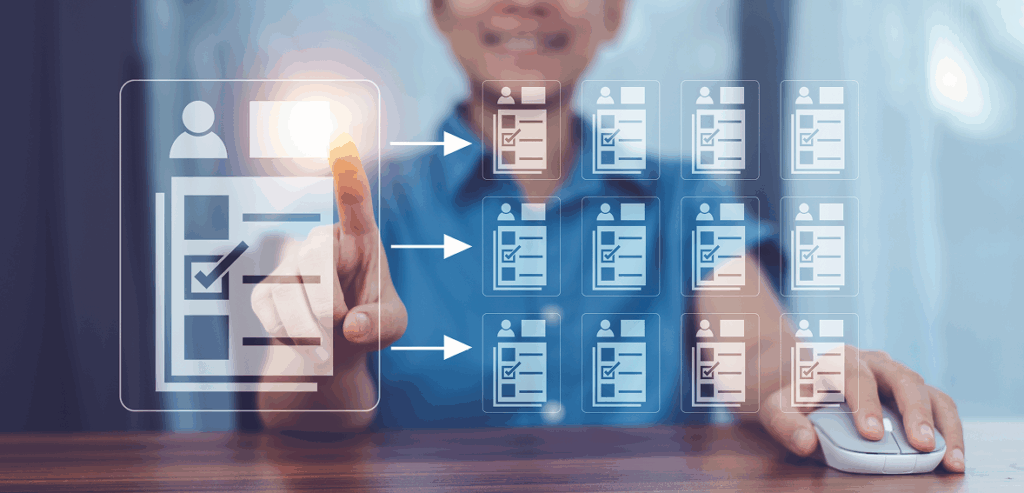
How Customer Loyalty Programs Work and Why They Matter
Introduction: The Power of Loyalty in Business
In today’s hyper-competitive marketplace, small and medium-sized businesses (SMBs) face a daunting challenge: how do you keep customers coming back when every competitor is just a click or a short walk away? While many businesses pour resources into customer acquisition—spending heavily on ads, discounts, and promotions—savvy owners know the real secret to long-term profitability lies in customer retention.
According to Bain & Company, a 5% increase in customer retention can boost profits by 25–95%. That statistic alone should be enough to make loyalty programs a top priority for any business. Yet, many small business owners either underestimate their value or implement programs that fall flat.
This guide serves as a comprehensive foundation for understanding loyalty programs: why they matter, how they work, the types of programs available, and how to decide what’s right for your business.
1. Why Customer Loyalty Programs Matter
Before diving into mechanics, it’s important to understand why loyalty programs are more than just a marketing gimmick.
1.1 Retention Over Acquisition
- Acquiring a new customer costs 5–7x more than retaining an existing one.
- Existing customers are 50% more likely to try new products and 31% more likely to spend more per transaction.
1.2 Emotional Connection
A loyalty program isn’t just about points or discounts—it’s about creating an emotional connection between brand and customer. Starbucks, for example, doesn’t just reward purchases—it makes customers feel like valued insiders with free birthday drinks, personalized offers, and early product access.
1.3 Data Collection & Personalization

Loyalty programs provide a goldmine of customer data: purchase frequency, preferences, average spend, and more. With this, you can tailor marketing campaigns and personalize offers in ways that dramatically increase conversions.
2. How Loyalty Programs Work
At their core, loyalty programs create a value exchange: customers receive tangible or intangible rewards in exchange for repeat business and engagement.
2.1 Core Mechanics
- Enrollment: Customers sign up (in-store, online, via app).
- Tracking: Purchases or actions are tracked via POS integration, apps, or cards.
- Rewards: Customers earn rewards (points, discounts, perks).
- Redemption: Customers use rewards, reinforcing the cycle of loyalty.
2.2 Key Principles
- Simplicity: The best programs are easy to understand. (“Buy 10 coffees, get 1 free.”)
- Transparency: Customers must clearly see progress toward rewards.
- Value Alignment: Rewards must feel worth it (a 1% discount is unlikely to excite anyone).
3. Types of Loyalty Programs
There is no one-size-fits-all approach. Let’s break down the most common types.
3.1 Points-Based Programs
- Customers earn points per purchase (e.g., $1 = 1 point).
- Points are redeemable for discounts or freebies.
- Example: Sephora Beauty Insider—customers earn points that can be redeemed for exclusive products.
Pros: Simple, scalable, familiar.
Cons: Can feel transactional if rewards aren’t meaningful.
3.2 Tiered Loyalty Programs
- Customers unlock different levels (Silver, Gold, Platinum) based on spend or visits.
- Each tier comes with increasing perks.
- Example: Marriott Bonvoy—higher tiers unlock free nights, upgrades, and VIP services.
Pros: Encourages long-term engagement and higher spend.
Cons: May alienate casual customers who can’t “level up.”
3.3 Paid Membership Programs
- Customers pay an upfront fee for premium perks.
- Example: Amazon Prime—members pay yearly but enjoy free shipping, exclusive deals, and streaming services.
Pros: Immediate revenue and strong retention.
Cons: Requires strong perceived value to justify cost.
3.4 Cashback & Discount Programs
- Straightforward money-back or discount rewards.
- Example: Rakuten (Ebates)—users get cash back on purchases.
Pros: Appeals to price-sensitive customers.
Cons: Doesn’t foster deep brand loyalty, only transaction loyalty.
3.5 Experiential & Value-Based Programs
- Rewards go beyond discounts—exclusive events, early access, or personalized experiences.
- Example: Nike Membership—members access exclusive products, personalized workouts, and events.
Pros: Creates emotional bonds and differentiates from competitors.
Cons: More complex to execute.
4. Common Mistakes Businesses Make
Even with the best intentions, many loyalty programs underperform.
4.1 Making Rewards Too Hard to Reach
If customers need to spend $500 for a $5 reward, they’ll lose interest.
4.2 Overcomplicating Rules
Confusing point systems or hidden terms frustrate customers.
4.3 Ignoring Customer Experience
If customer service is poor, no program will save you.
4.4 Focusing Only on Discounts
If rewards are only discounts, customers may chase lower prices elsewhere.
5. How to Build a Successful Loyalty Program
Here’s a step-by-step approach for SMBs.
5.1 Understand Your Customers
- Use surveys, purchase history, and feedback to learn what motivates them.
- Cafés may find customers value freebies, while salons may succeed with VIP perks.
5.2 Choose the Right Model

- Start simple (points or punch-card style).
- Scale into tiers or experiences as your business grows.
5.3 Define Rewards Clearly
- Examples: “Buy 9 haircuts, get the 10th free.”
- Or: “Spend $100, earn $10 off.”
5.4 Use the Right Tools
- POS integrations like Square Loyalty, Clover Rewards, or apps like Belly.
5.5 Promote Consistently
- In-store signage, website banners, email newsletters, and social media shoutouts.
6. Case Studies of Successful Loyalty Programs
6.1 Starbucks Rewards
- Offers stars per dollar spent, redeemable for drinks and food.
- Personalization via app keeps customers engaged daily.
- Results: Over 60% of U.S. transactions now come from loyalty members.
6.2 Panera Bread’s “MyPanera”
- Focuses on surprise rewards (free bagels, discounts).
- Emotional connection through personalization.
- Results: Drives millions of repeat visits annually.
6.3 A Local Boutique (Hypothetical Example)
- Boutique offers a VIP club: $20/year membership for early access, exclusive discounts, and invites to private events.
- Members return 2.5x more frequently than non-members.
7. Measuring Loyalty Program Success
Metrics every business should track:
- Customer Retention Rate (CRR): How many customers return within a set period.
- Repeat Purchase Rate (RPR): Percentage of customers making more than one purchase.
- Customer Lifetime Value (CLV): Total expected spend per customer.
- Redemption Rate: Percentage of earned rewards actually redeemed.
- Engagement Rate: App downloads, active participation, or tier upgrades.
8. The Future of Loyalty Programs
Loyalty is evolving quickly with new technology.
8.1 Personalization Through AI
AI-powered analytics will customize rewards at an individual level.
8.2 Omnichannel Loyalty
Programs will work seamlessly across in-store, online, and mobile.
8.3 Sustainability & Values
Customers increasingly want eco-friendly or cause-driven rewards (e.g., planting a tree for each purchase).
8.4 Blockchain & Digital Wallets
Crypto and tokenized loyalty points are emerging, making rewards transferable or tradeable.
Conclusion: Loyalty as the Growth Engine
For small and medium-sized businesses, loyalty programs are more than a nice-to-have—they’re a critical growth engine. A well-designed program keeps customers coming back, provides valuable data, and builds emotional bonds that competitors can’t easily break.
Whether you’re a coffee shop giving away a free latte, a salon offering VIP memberships, or an e-commerce store with personalized perks, the foundation is the same: make customers feel valued, make rewards attainable, and keep the experience simple and enjoyable.
Invest in loyalty now, and you’re not just rewarding your customers—you’re future-proofing your business.